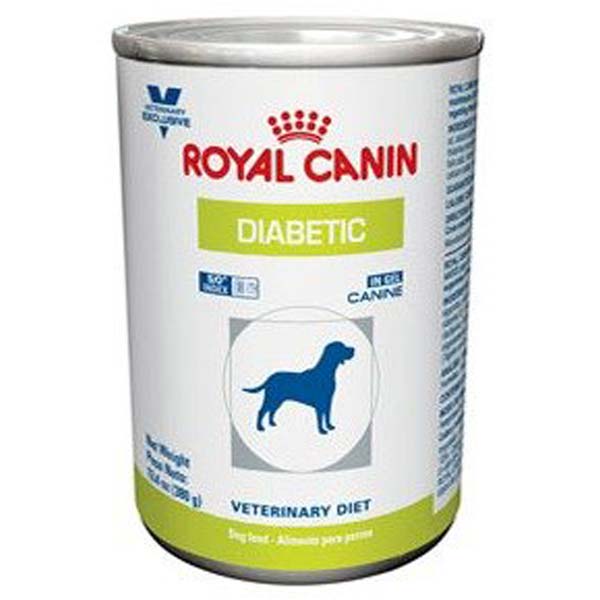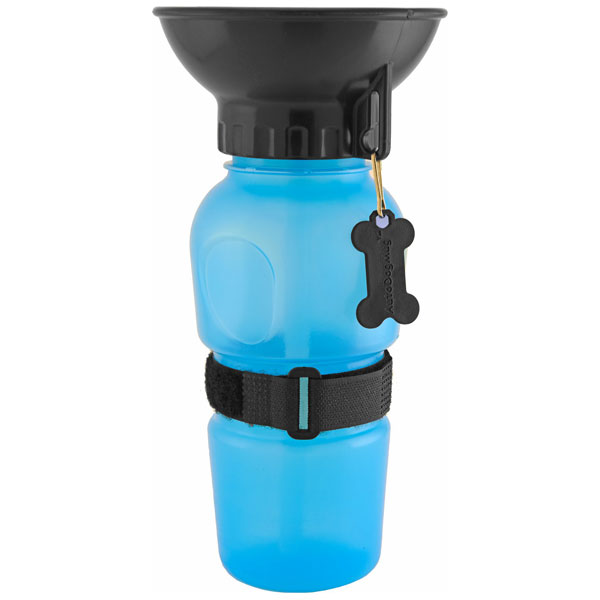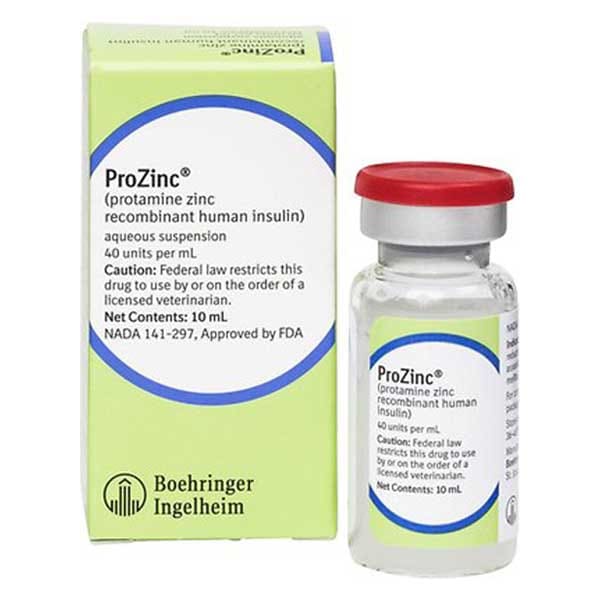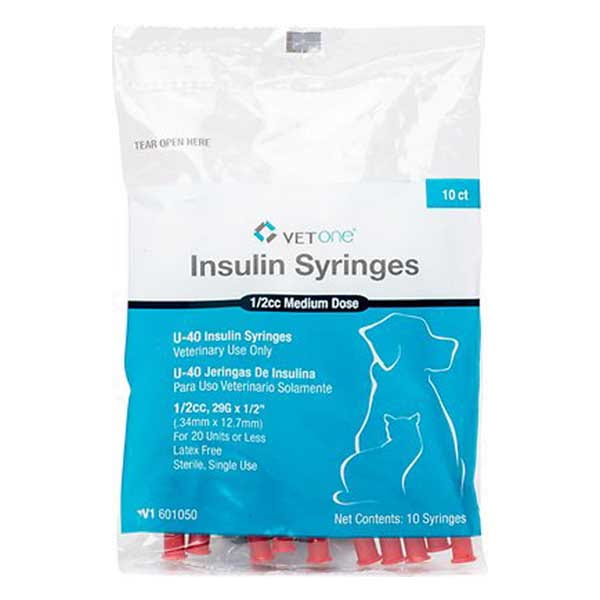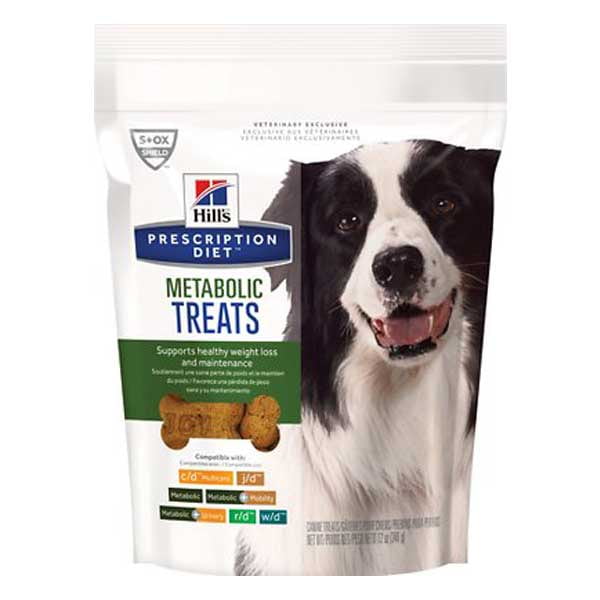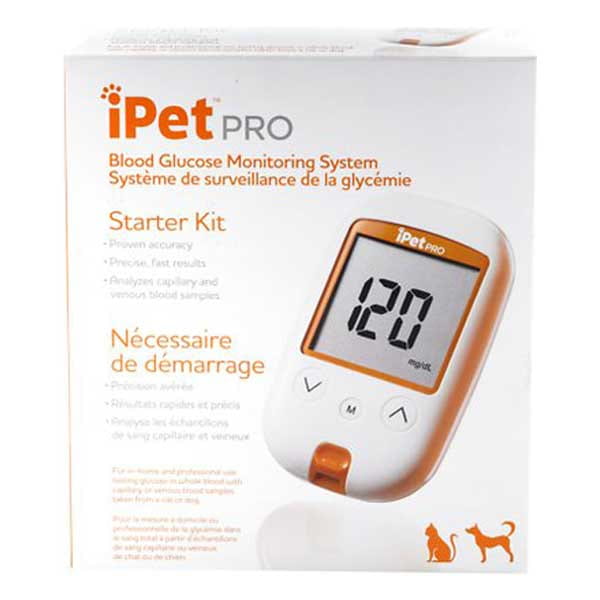Each breed of dog has particular illnesses that they may be predisposed to more than other breeds. Some dogs, such as Samoyed, Poodle and Miniature Schnauzer are just a few of the breeds that appear to have diabetes to be one of their medical predispositions. While some instances of diabetes appear due to genetic tendencies, many cases of this doggie disease come from poor health care. Dogs that are overweight, inactive or have a poor diet immediately have an increased risk of being diagnosed with this chronic disease.
Diabetes is a disease that can creep up on your pet and catch you unaware. You may suddenly notice some specific behavioral and physical changes in your pet that make a trip to their vet a necessity. Once your pets’ doctor is aware of the changes in your dog, it will not take long before they can confirm whether your pup has diabetes or not. This chronic illness is one that affects many different species of animals, including humans. It can not be cured for any member of a species diagnosed with it, but it can be managed with the right medical input and management. So, once your dog is diagnosed, it is up to you to change their lifestyle, take care of them and manage the disease to the best of your ability. By making these lifestyle changes you will give your canine companion the best chance to live their life to the fullest even with this disease.
What is Diabetes?
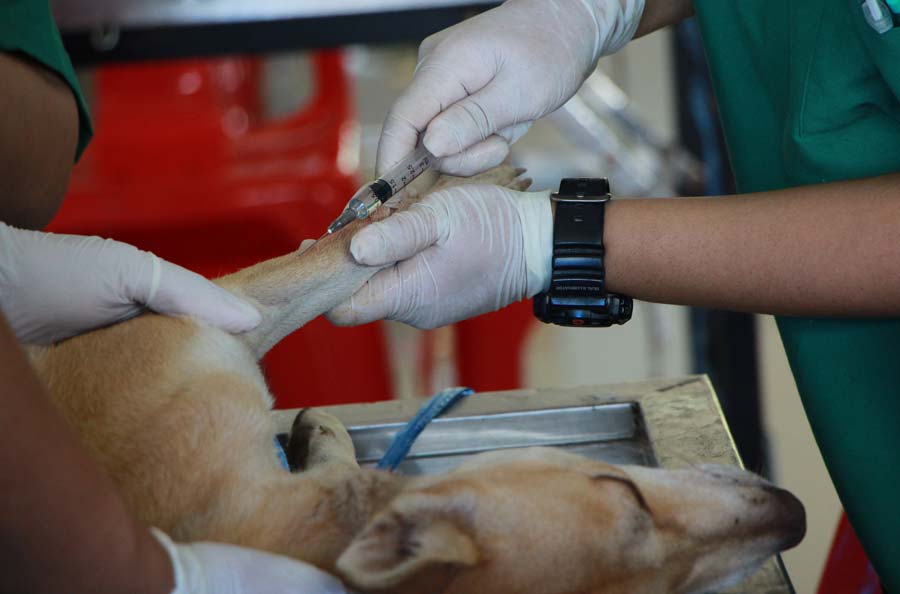
Diabetes, Diabetes mellitus, or sugar diabetes all mean the same thing. It is a metabolic disorder that affects how your pet's body changes food into energy. If your dog has diabetes, this means their glucose and insulin are not working together and doing what they should. When your dog eats, their bodies aren’t converting their nutrients into energy properly due to a glucose-insulin issue.
The glucose (a type of sugar) created during digestion should be fueling the body’s cells but when your pup has diabetes the glucose isn’t getting delivered properly to those cells. Insulin, a hormone that is created in the pancreas, should be the controller of this delivery by “telling” the bodies cells to take the glucose and nutrients from the bloodstream and utilize them as energy. However, with diabetes, this conversation between glucose and insulin does not get communicated properly. Basically, if your dog has diabetes, there is too much sugar in your pet’s bloodstream and even with all this sugar, the cells that require it can not get it as they are not being “told” to pick it up. They are starved for the body’s fuel, so they start to break down fat and protein to make up for it.
Dogs can either have insulin-dependent diabetes (IDDM) or insulin-resistant diabetes (IRD). The first one, also called Type I, means that your pup’s body isn’t producing the amount of insulin it needs. Production has stopped entirely. This happens when your dog’s pancreas is either damaged or not working properly. This is the type of diabetes where your dog will require at least one needle, if not more, every day to replace the insulin that is not being produced.
The second type of diabetes is insulin-resistant diabetes. It is also called Type II and means that even though the pancreas is making insulin, your dogs’ body isn’t using it properly. The cells are not answering the message that insulin is sending which means the glucose is staying in the blood and not fuelling the body. This type tends to happen in older and overweight dogs.
There is a third type of diabetes which is a variable of Type II. It is the same as insulin-resistant, but it is temporary and affects female dogs are pregnant or in heat. This type usually goes away once the heat or pregnancy cycle is complete. However, at the time it is just as dangerous as the chronic form of diabetes is.
Dogs who are affected by diabetes will show unusual signs that you are not used to seeing in them. They will be hungry more often and want more than the usual amount of food. Part of this comes from the issue that the brain is not being provided with glucose. The dog isn’t getting signals from the brain telling them that they aren’t actually hungry.

Secondly, there is another communication issue in the fact that their insulin is also not telling their muscles and organs to change glucose into fuel. This forces the extra glucose out through urine making your dog need to go to the bathroom more often. This will also cause a secondary issue with high thirst due to the extra amount of water they are losing with the urination.
A third factor you will discover is your dog may become lethargic due to the lack of glucose. They are lacking in fuel thus lacking in normal energy. Along with these noticeable external factors, diabetes can also cause internal changes in their liver, eyes, kidneys, nerves, and teeth as it progresses.
Things to watch for:
If you miss these signs, then more significant ones will occur:
The biggest threat of untreated diabetes is if your canine friend ends up with diabetic Ketoacidosis (DKA). This refers to the fact that they will have metabolic acidosis caused by the liver breaking down fat to ketones to try and cope with the body starving. The outcome of this can be fatal so you want to know the early signs of canine diabetes allowing you to catch it and begin medical management to avoid the drastic negative outcomes.

There are lots of possibilities when it comes to the factors that cause diabetes in dogs. The following are known contributors:
Age – most dogs who are diagnosed with diabetes get it somewhere between middle age and senior. That’s not to say it does not happen in younger dogs, but the majority are over 5 years of age when they are diagnosed.
Gender – female dogs are more than two times as likely to get diabetes than male dogs if the female has not been spade. If your pup is not breeding then it makes sense to make sure they are spade as soon as appropriate.
Pancreatitis – If a dog has chronic or repeated bouts of pancreatitis (inflammation of the pancreas) this can cause major damage to the organ. If the pancreas is unable to function properly then that can lead to the dog having diabetes as the insulin production is failing. Pancreatitis can be caused by similar issues that cause diabetes such as obesity and a high-fat diet so its best to keep your dog at the optimal weight to help prevent both medical issues.
Obesity – This is not only a threat to humans but dogs as well. Obesity is a variable that plays a significant role in insulin resistance. It is also a major risk factor for getting pancreatitis which as listed previously also can increase the risk for a dog having diabetes.
Steroids – Veterinarians can often prescribe various steroidal medications long term for dogs when treating various illnesses. This can once again up the chances of a diabetes diagnosis. Long term steroidal use increases the risk.
Cushing’s Disease – With the understanding that steroids can affect the development of diabetes, Cushing’s disease similarly affects the body. It makes the body produce too many steroids within the dog which means it is going to have the same effect as long term use of a steroidal medication would.
And Beyond…… many other medical conditions may factor into a dog getting diabetes. Autoimmune disorders and viral infections are also thought to be possible triggers.
DNA – Genetics can play a significant role in the development of diabetes. Some breeds are more prone to the disease than others. Poodles, Bichons Frises, Pugs and some miniature dogs have a much higher risk of being diagnosed with the disease not just in the later years but with early-onset as well.
You want to catch diabetes early as if it is left unchecked it can not only damage your dog internally, but it will eventually become fatal. Early diagnosis means early treatment and less medical fall out. It's an easy diagnosis when the vet has a heads up about your dog’s behavior and symptoms. They will want to hear about your dog’s health before they seemed sick and all the details of the symptoms you are seeing. A simple blood test, chemical profile, and urinalysis will check for too much sugar (glucose) in your dogs’ blood and urine. These tests may also catch the fact that your dog has high liver enzymes and/or their electrolytes are not balanced, again showing the presence of diabetes.
You vet may also use x-rays and ultrasounds to look for diseases that go hand in hand with diabetes such as kidney stones, inflamed pancreas and liver and other illnesses linked to your pet’s diabetes. Vets will want to make sure they catch any health issues that might be linked so they can begin treatment for not only the primary disease of diabetes but for any secondary issues as well.

If canine diabetes is caught early enough, it can almost always be managed without much ado. As an owner, you will obviously be the person who will have to make sure ongoing care is given. From making sure your dog's glucose levels are stable to giving injections, it will be important to your dog's ongoing health that diabetes monitoring is highly regulated and maintained. This caretaking role can not be taken lightly as the daily shots and glucose monitoring is critical to keeping your pup well and making sure there are no secondary effects from diabetes.
You will have to work hand in hand with your dog’s veterinarian to make sure you have a solid treatment plan in place. This will mean extra vet visits for ongoing testing and medication checks until you and the vet are sure you have the right mix of medication, diet, and activity. You will need to have the ability to monitor your dog at home to make sure the blood sugar is well regulated and balanced as well. You will need to understand medications and how to give them, implement diet and exercise, monitor their glucose every day and know what to watch for once they are under care for the disease.
This is one of the most important factors when caring for a dog with diabetes. Obesity can not only play a significant role in the onset of diabetes but can be problematic in its management as well. This problem also exists in reverse where your dog may have to gain weight if they have gotten too skinny due to untreated diabetes. You and your vet will have to put a diet plan in place for your pup to get to a healthy weight whether that weight is up or down.
Your pup now can’t just have any bargain brand of food off the shelf. Their nutrition will need to be a product that has high-quality protein combined with high fiber and complex carbs. They will only need 20-25% carbohydrate content to help keep their blood sugar in check. Fiber and complex carbs help slow the absorption of glucose so are a must as well. The type of food you should also have a low glycemic index so as not to trigger a blood sugar spike which will be further beneficial for your diabetic canine. The vet may also suggest that your dog's diet have lower fat content to keep calories down to maintain a healthy weight if obesity was an issue. They may suggest food such as:
Orijen Original Grain Free - Good protein with a low glycemic index and only 20% carbs.
Merrick Grain Free with Texas Beef and Sweet Potato - While a little high in carbs, it has good protein and sweet potato to help with its Glycemic rating. Grain-free is helpful as well.
Royal Canine Veterinary Diet Diabetic - Low carb offering with good fiber with a low glycemic index.
Along with improved diet designed to meet the needs of diabetic dogs, you will need to make sure your pup is up and moving to help avoid drastic ups and downs in their blood sugar levels. Their exercise does not need to be turned into extreme outings, but it does need to be consistent and at a moderate pace. A couple of nice walks per day will get them moving and feeling better. So grab some water, their leash and poop bags and enjoy a great walk to the market or the park.
Many dogs who are diagnosed with diabetes will need daily needles of insulin to control their sugar levels. It sounds difficult but in reality, it will simply become part of you and your dog’s daily routine. Once your veterinarian lets you know the details of your dog’s prescription, you will need to make sure you have items and medication available at home that will make life easier. Needles can be purchased in bulk (your vet will tell you the size), insulin for canines as prescribed can be kept, a glucose monitor to test for blood sugar is needed and some healthy treats for after their needle for being a good pup. These will be used in maintaining a healthy diabetic lifestyle. Having all these items on hand will make you and your pups new health routine easier.
Product Image | Product Name | Buy Now |
|---|---|---|
Orijen 25 LB Dry Dog Food, Original Formula | ||
Merrick Grain Free Dry Dog Food Recipes | ||
Royal Canin Veterinary Diet Canine Diabetic Canned Dog Food | ||
Frisco Dog Poop Bags + Dispenser | ||
Frisco Solid Nylon Dog Leash | ||
Highwave AutoDogMug Portable Dog Water Bottle & Bowl, 20-oz bottle | ||
ProZinc Insulin for Dogs and Cats | ||
Insulin Syringes/Needles U-40 29 Gauge x 0.5-in | ||
Hill's Prescription Diet Metabolic Canine Dog Treats | ||
iPet PRO Blood Glucose Monitoring System Starter Kit for Dogs & Cats |
Final Thoughts
Diabetes in dogs is a disease that is not something to be taken lightly. But while it is a serious illness, your dog can live a fully happy and functional life if it is managed properly. You must work closely with your pup’s veterinarian to come up with a treatment plan that works best for your dogs’ particular diabetic needs. You will need to learn about hypoglycemia (low sugar) and hyperglycemia (high sugar) so you know what to be aware of when your dog experiences either. Charting their diet, daily blood results, how much insulin they are taking, and their weight will be important to maintaining their health. It helps you and their vet recognize triggers and pattern changes.
Your dog should be spade if a female and not breeding as the estrogen can make diabetes worse. Your dog can’t be cured of diabetes, but it can certainly be kept in check allowing your dog to enjoy a full life. But to do this, you as an owner have to monitor and maintain a good lifestyle that will support their health properly. It's important not only to control diabetes but to do so in the hopes of preventing further complications down the road.




